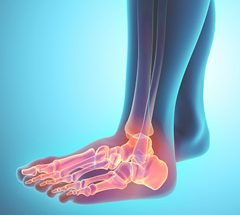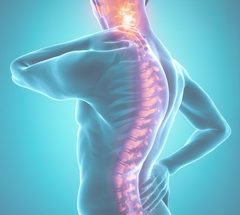Epidural Steroid Injection
Learn how an epidural steroid injection works to reduce inflammation around nerve roots to reduce spinal pain.
The membrane that covers the spinal canal and nerve roots in your spine is called the dura membrane. The space surrounding the dura is the epidural space. The epidural space is near nerve roots that may the source of your pain, caused by a disc herniation and/or bone spurs. Your doctor may be able to inject medications such as steroids into the epidural space to relieve the inflammation and associated spinal pain.
What is an epidural steroid injection? How can it be helpful?
An epidural steroid injection places steroid medicine into the epidural space in order to reduce inflammation around the nerve roots that are irritated by ruptured discs and/or bone spurs. This medical condition is known as radiculopathy. The reduction in inflammation reduces the pain.
The injection may be targeted in the middle of the epidural space (interlaminar) or directed at specific nerve root levels (transforaminal). The transforaminal route (also known as selective nerve root block) may be useful for diagnostic purposes to sort out the specific nerve root that is causing the pain based upon the response of the injection.
When will the injection take effect and how long will it last?
Pain relief could begin the next day or be delayed up to a week, but typically takes two to three days on average. It is difficult to predict the effect of the injection or its duration of pain relief. There is a broad range, but a good effect is longer than three months.
What will happen to me during the procedure?
You will lie on your stomach on a procedure table with pillows positioned for optimal comfort. After the back area is prepped with special soap, local anesthetic numbing medicine will be injected over a small area of the skin, which may sting for a few seconds. Next, a special needle will be inserted and guided via X-ray to the epidural space. Dye is then injected to confirm proper location into the epidural space. Finally, the healthcare provider injects the medication (such as a steroid or anesthetic). You may feel pressure in the back or down the leg as the medication is injected.
What are the possible side effects of the injection?
- Bruising
- Flushing
- Temporary slight numbness
- Headache if dural puncture occurs (1% risk)
- Temporary (24-48 hours) flare-up of back pain
- No change in your pain
- Reaction to the local anesthetic or steroid (rare)
- Infection (rare)
- Collapsed lung (rare, only a risk in the cervical and thoracic regions)
- Spinal cord or brain injury (rare, only a risk in the cervical and thoracic regions)
What should I do after the procedure?
Immediately afterwards, you may be given an injection report form which will ask you to monitor your pain levels after the procedure. We will review this with you before you depart the clinic. The healthcare provider who referred you for the injection will assess the outcome of the procedure with you to determine the future course of your treatment.
Your doctor may refer you to a physical therapist or chiropractor right after the procedure while the numbing medicine is active, and over the next few weeks while the steroid is working.
We prefer that you have a ride home, and if you do, you can leave right after the procedure if you feel normal. If you do not have a ride home, and have not had any oral or IV sedating medicine, you can drive yourself home if, after being observed for 30 minutes following the injection, you do not develop any neurological symptoms.
General instructions before and after the epidural steroid injection
- Do not eat anything for six hours prior to the procedure.
- Take your routine medicines before the procedure (such as high blood pressure and diabetes medicines). Do not take aspirin and all anti-inflammatory medicines such as Motrin® (ibuprofen), Aleve® (naproxen), Relafen® (nabumetone), or Daypro® (oxaprozin). These should be stopped five days before the procedure and can be restarted the day after the procedure. Unless directed otherwise by your physician, you may take other forms of pain medication (e.g., acetaminophen, narcotics).
- If you are on Coumadin® (warfirin) or heparin, you must call our office to determine how long these medications should be stopped before the procedure and whether a blood draw is necessary. Typically, you will stop taking Coumadin for four days prior to the injection.
- If your procedure has a diagnostic purpose, we discourage the use of sedating or pain medication at the time of the procedure, as this may alter your perceptions of pain that are not related to the injection. If you receive any sedating or narcotic medication, you will need to have someone drive you home. You may return to your current activity level the next day, including returning to work.
- If you are an insulin-dependent diabetic, let your injection doctor know. Your insulin dose may be adjusted depending upon the time of day your injection is scheduled. After the procedure, your blood sugar may be temporarily elevated for a few days due to the steroid.
Because this is a non-urgent medical procedure, it is important that you do not have an acute infectious illness at the time of the injection. If you are concerned about your fitness for the injection, please call your healthcare provider.

















